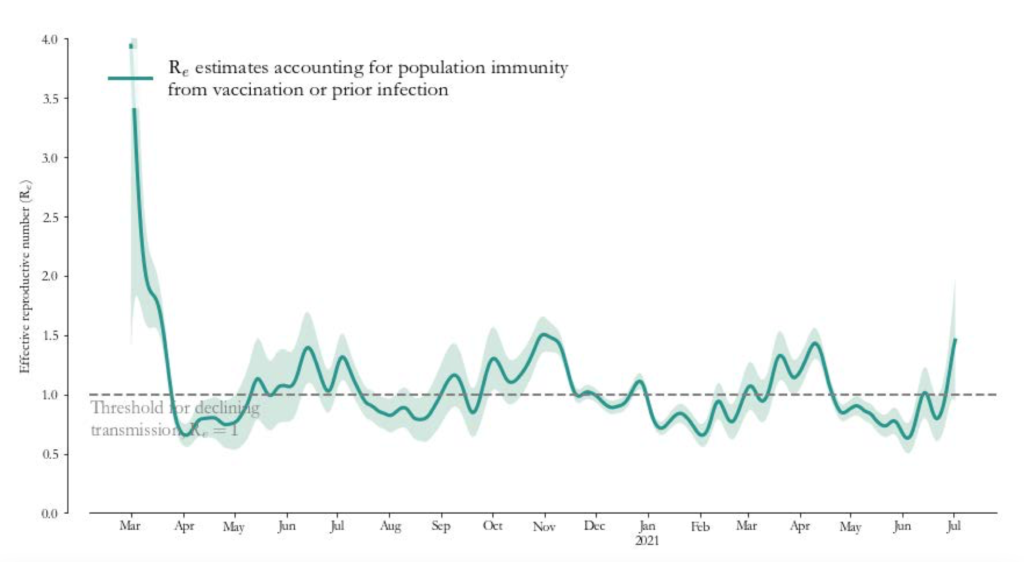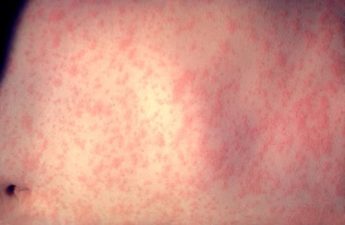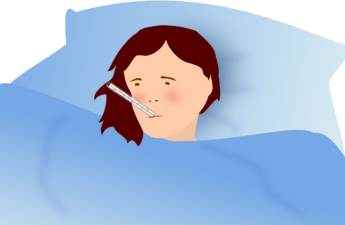Vaccination rates not increasing fast enough to control the virus

From the Washington State Department of Health
OLYMPIA – The latest COVID-19 modeling and surveillance situation report from the Washington State Department of Health (DOH) shows a new surge: cases are increasing in the state as the Delta variant becomes more widespread. As cases stemming from the Delta variant rise, anyone who has signs or symptoms of COVID-19 should get tested, regardless of vaccination status or prior infection.
Report findings include:
- Statewide case counts and hospital admissions flattened starting in mid-June, and case counts began increasing over the first week of July. Multiple counties were experiencing an uptick in case counts as of July 8, and additional counties appear to be seeing increases in more recent incomplete data.
- As of July 8, case rates flattened in age groups that were previously seeing declines, and rates were increasing in people ages 20-39. Hospital admission rates began to flatten across all age groups in the last week of June. As of July 8, admission rates were increasing in people ages 40-49 and 70-79 and may have been starting to increase in ages 20-39 and 60-69. More recent daily reports from hospitals showed admissions increasing in all adult age groups over the week ending July 18.
- Around the end of June, estimates of statewide transmission increased sharply. The best estimate of the reproductive number (which tells us how many new people each COVID-19 case will infect) on July 2 was 1.46. The high degree of uncertainty in the estimate make it difficult to know for sure how big of an increase we may be seeing, but a reproductive number above one means the virus is spreading faster. To see cases decline, the reproductive number needs to stay well below one for a substantial amount of time.
- The delta variant, a more transmissible strain of the virus, is now the dominant strain in circulation. The latest genetic sequencing data show delta variant cases made up almost 58% of sequences with specimens collected between June 20 and July 3. Model-based projections estimate that on July 19 92% of cases may be attributable to the delta variant.
- While overall population immunity continues to increase, the pace has slowed considerably and more vaccination is needed to keep cases from spiking higher. On July 8, the best model-based estimate of statewide population immunity (including from vaccination and from prior infection) was 51.9%. However, it is important to keep in mind that immunity levels vary widely across counties, communities and social groups.
- Despite increasing transmission and a bigger presence from the delta variant, vaccination is still working to protect people from severe COVID-19 illness. As of July 4, estimated hospital admission rates among unvaccinated people ages 45-64 were about 20 times higher than rates among people of the same age who were fully protected by vaccination. For ages 65 and older, the estimated admission rate for unvaccinated people was about nine times higher than for those who were fully protected.
“I’m deeply concerned about areas of the state with lower vaccination rates now that a more infectious variant is likely to be the one that reaches those communities,” said Acting Chief Science Officer Scott Lindquist, MD, MPH. “If you’ve been waiting to get vaccinated for any reason, now is the time to protect yourself, your family and everyone around you. With transmission increasing and immunity levels dangerously low in many communities, every vaccine matters.”
More vaccination is needed to keep the virus in check. If you have been waiting to get vaccinated, now is the time. Vaccination is the best way to protect yourself, your loved ones and everyone around you. If you are already vaccinated, you can help by encouraging people you know to get their vaccine.
If you have questions, reach out to your healthcare provider or visit DOH’s Frequently Asked Questions page. To find vaccine near you, you can use the state’s Vaccine Locator website, text your zip code to GETVAX (438829) or VACUNA (822862) to receive addresses of nearby available vaccination sites, or call 833-VAX-HELP.
DOH has partnered with the Institute for Disease Modeling (IDM), Fred Hutchinson Cancer Research Center, University of Washington and the Microsoft AI for Health program to develop these reports every other week since the early months of this pandemic. As our experts at IDM transition away from this project, we at DOH would like to extend our sincere gratitude for their dedicated partnership in the production of these reports.. More COVID-19 data can be found on the DOH data dashboard.


